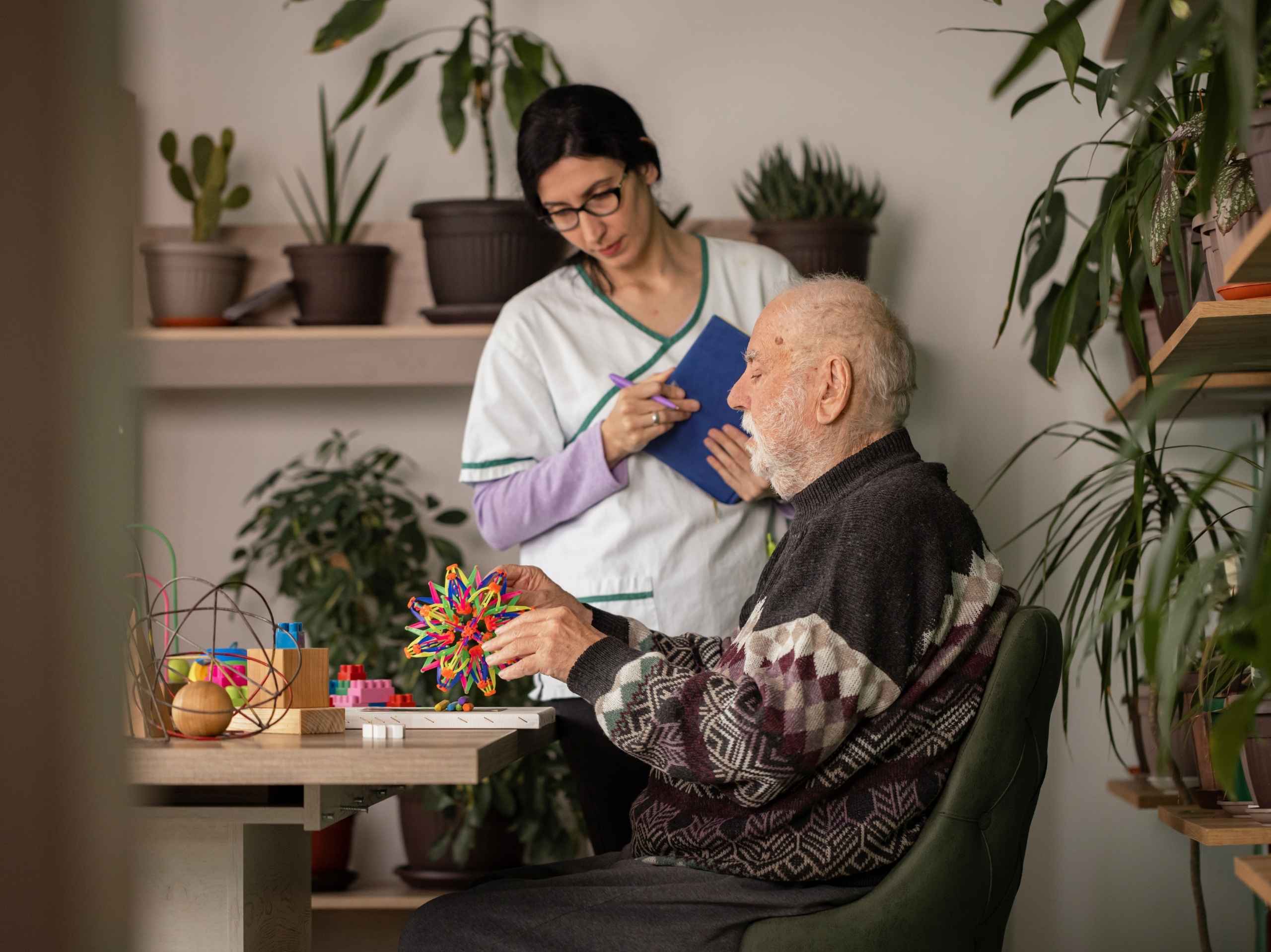A successful move to Medium Term Accommodation (MTA) is about more than just changing addresses—it’s about ensuring stability, safety, and comfort during a critical life transition. Whether it’s following a hospital discharge, waiting for a Supported Independent Living (SIL) placement, or navigating an unexpected change in care needs, moving to MTA can be both emotionally and logistically challenging.
For many NDIS participants, this type of interim accommodation is a necessary stepping stone—but if not planned carefully, the transition can lead to stress, disorientation, and setbacks. Families and support coordinators often find themselves juggling funding approvals, new routines, unfamiliar environments, and the participant’s emotional wellbeing.
At Reaching Abilities, we understand the pressure that comes with these moves. That’s why we’re here to guide you through the moving preparation NDIS process with care, compassion, and a deep understanding of individual needs. Let’s explore how you can make the transition to MTA smooth and stress-free.
What is Medium Term Accommodation?
Medium Term Accommodation (MTA) is an NDIS-funded support designed to provide short-to-medium stays for participants who are unable to move into their permanent home due to circumstances beyond their control. MTA is considered interim accommodation—it’s not a long-term solution but a bridge to more permanent housing, such as a SIL home or private rental.
The NDIS typically funds up to 90 days of MTA, though extensions may be possible under certain conditions. This timeframe gives participants a stable and supported place to stay while they wait for long-term arrangements to fall into place.
Common use cases for MTA include:
- Discharge from hospital where home is not yet suitable
- Waiting for home modifications or equipment delivery
- Transitioning to SIL or Specialist Disability Accommodation (SDA)
- Emergency housing due to a sudden change in circumstances
MTA for NDIS participants is flexible, allowing providers to create tailored support plans that reflect the participant’s health, behaviour, and daily living needs. It’s a critical piece of the NDIS housing support puzzle that ensures no one is left without a safe place to stay.
Common Challenges in Transitioning to MTA
Even when it’s temporary, a move to MTA can stir up a host of emotional and practical challenges. For participants, especially those with cognitive impairments or high needs, this type of transition can be overwhelming.
Common hurdles include:
- Emotional stress: Leaving familiar surroundings, routines, and carers can cause anxiety or confusion—particularly for individuals with dementia, autism, or psychosocial disabilities.
- Unfamiliar environments: Adjusting to a new space, staff, and daily routine takes time. Sudden changes can disrupt behaviour, sleep, and overall wellbeing.
- Loss of structure: When routines are interrupted, participants may feel a loss of independence or control, making it harder to engage with their support plan.
- Communication gaps: If providers aren’t fully briefed or participants aren’t involved in planning, key needs can be missed.
Supporting a successful transition to MTA means recognising these risks and addressing them head-on with thoughtful planning, compassionate communication, and person-centred practices.
Preparing for the Move
Planning ahead is essential when it comes to moving preparation under the NDIS. A well-prepared move not only reduces stress for the participant but also improves their ability to settle into their temporary disability accommodation with confidence.
1. Confirm Funding and Approvals
Before any move takes place, it’s important to confirm that MTA funding is approved in the participant’s NDIS plan. This may require supporting documentation from medical teams, allied health professionals, or accommodation assessors. Engaging with your support coordinator early can help streamline this process.
2. Engage with the Provider Early
Once funding is confirmed, reach out to your MTA provider as soon as possible. Early engagement allows the provider to tailor support, assess needs, and prepare the environment. At Reaching Abilities, we take time to review the participant’s care history, preferences, and daily routines to ensure nothing is overlooked.
3. Pack Familiar and Essential Items
Bring personal belongings that provide comfort and familiarity—such as photos, favourite blankets, clothing, or sensory aids. These small touches can help the participant feel more at home in their new surroundings and ease anxiety during the transition.
4. Share Medical, Behavioural, and Support Preferences
Provide your provider with a detailed handover, including medications, routines, communication styles, triggers, and support preferences. The more they know, the better they can deliver person-centred care from day one.
Top 10 Things to Organise Before Your MTA Move
- Confirm MTA funding in NDIS plan
- Get documentation from relevant professionals
- Contact your preferred MTA provider early
- Tour or view the accommodation (if possible)
- Pack clothing, medication, and personal care items
- Include comfort items—pillows, photos, hobbies
- Prepare a medical and behavioural summary
- Clarify daily routines and preferred activities
- Share emergency contacts and support plans
- Keep the participant informed and involved
With these steps in place, your move becomes less about disruption and more about ensuring safety and consistency during a crucial transition.

How Reaching Abilities Supports a Smooth Transition
At Reaching Abilities, we believe that every transition deserves personalised care. That’s why we offer hands-on, proactive support to help participants and their families feel confident throughout the move to Medium Term Accommodation.
1:1 Transition Planning
We don’t believe in one-size-fits-all. Each participant receives a tailored transition plan that outlines goals, routines, support levels, and communication preferences. We involve participants and families every step of the way to ensure their voices are heard.
Onboarding with Participants and Families
Our onboarding process includes face-to-face introductions, walk-throughs of the property, and meet-and-greets with staff. This helps build trust and ensures familiarity before the move officially begins.
Staff Trained in Dementia and High Needs
Reaching Abilities staff are not only skilled but also deeply compassionate. Our team includes professionals experienced in working with dementia, intellectual disability, autism spectrum disorder, and high physical needs. We focus on consistency and low-disruption approaches to minimise stress.
Continual Updates to Coordinators
We maintain open communication with support coordinators, providing regular updates on the participant’s wellbeing, any changes in routine, and progress toward transition goals. This helps keep everyone in the loop and fosters collaborative care.
With our care-focused moving approach, we ensure that every detail is covered so that the participant can settle in safely and comfortably.
Key Takeaways for Coordinators and Families
When it comes to a successful transition to MTA, early planning is your best tool. Here are our top takeaways for NDIS support coordinators and families:
- Plan early and engage providers quickly—giving everyone time to prepare increases the likelihood of a smooth experience. Early engagement also allows the provider to understand the participant’s unique needs.
- Prioritise participant comfort—pack personal items, involve them in decisions, and maintain routines where possible. Familiarity eases anxiety and builds a sense of security.
- Communicate clearly and frequently—share relevant information with providers and stay in touch during the stay. A shared understanding supports better outcomes.
- Work with providers who offer customisation—flexible support means better outcomes for the participant. Tailored care plans ensure that services meet both immediate and long-term needs.
- Look for transparency and empathy—these are key indicators of a provider who truly cares. Providers should be open about what they can offer and responsive to feedback.
- Include participants in the planning process—even small decisions, like choosing their room setup or mealtime preferences, can empower them and foster independence.
The right preparation, paired with the right provider, makes all the difference in creating a safe, supportive, and positive experience.
Smooth Moves Start with The Right Support
Moving into Medium Term Accommodation doesn’t have to be overwhelming. With early planning, open communication, and a care-focused provider, participants can settle into their temporary home with ease and dignity.
At Reaching Abilities, we go above and beyond to make the transition seamless. From tailored planning to experienced support staff, we’re here to ensure every participant feels safe, respected, and cared for throughout the journey.
Get in touch today to plan a seamless MTA transition with us. Let’s create a supportive bridge to your next chapter.

Ozer Tanlasi – Founder and Director of Reaching Abilities
Ozer Tanlasi is the Founder and Director of Reaching Abilities, an organisation dedicated to providing compassionate and empowering support to individuals with disabilities. With a background in allied health and a deep commitment to inclusive care, Ozer established Reaching Abilities to create a welcoming space where individuals can thrive, gain independence, and achieve their personal goals. Her approach is centred around understanding each individual’s unique needs and strengths, ensuring they receive tailored services that make a positive impact on their lives. Under Ozer’s leadership, Reaching Abilities has become known for its compassionate, client-focused approach, supporting individuals and families in building meaningful connections and reaching new potentials.






